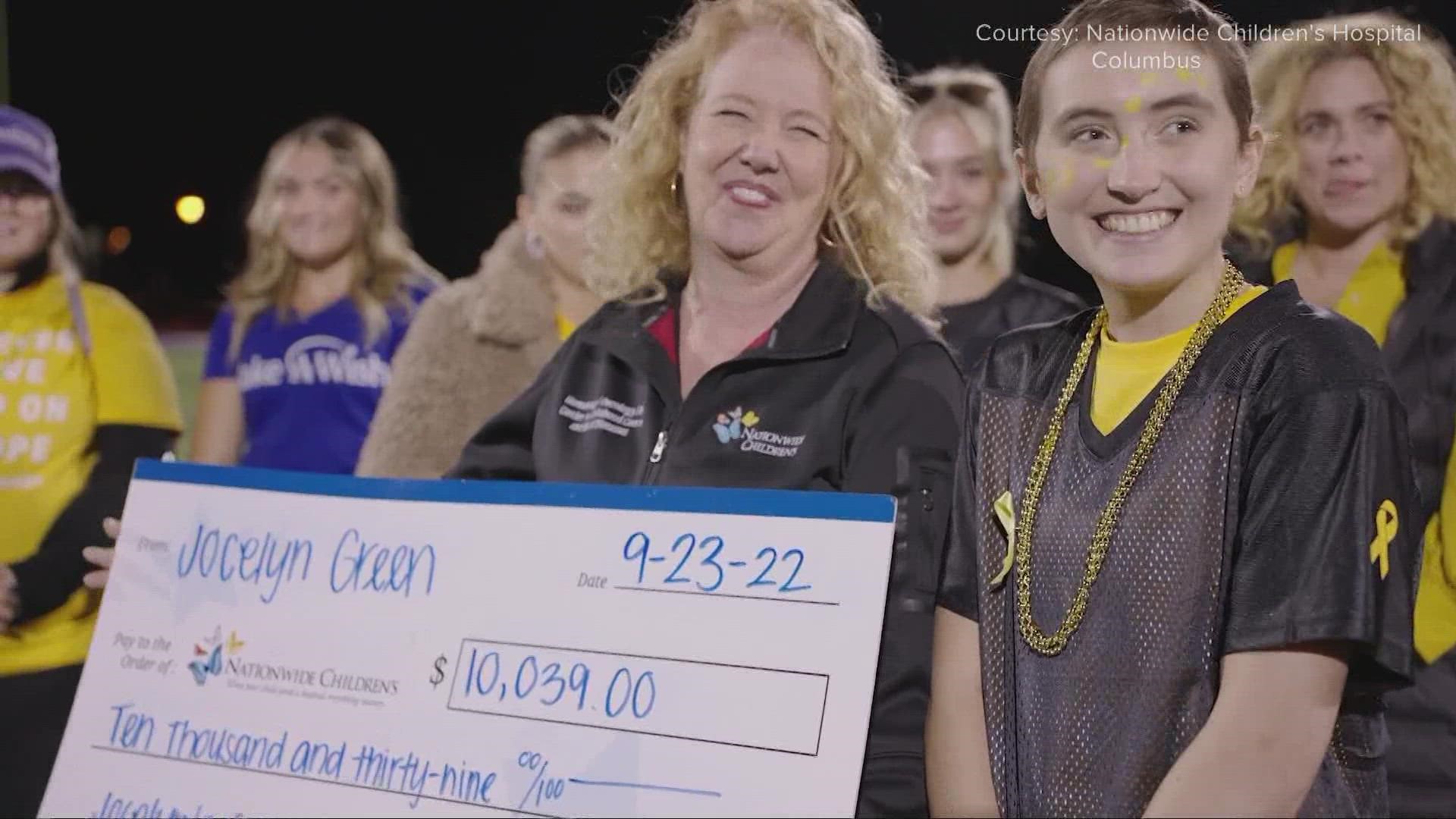WESTERVILLE, Ohio — The holiday season is often the catalyst of good tidings for sharing, caring and providing joy for others. But it's also a good time to teach valuable life lessons to kids that may carry on that spirit of generosity for years.
Whether families donate food, clothes or toys, spend time together volunteering in the community, or work to bring holiday cheer to pediatric patients in the hospital, generosity in all forms has an impact – including on one’s mental health.
Jocelyn Green, 14, from Westerville, Ohio, understands and embraces the importance of generosity.
During her treatment for T-cell acute lymphoblastic leukemia at Nationwide Children’s Hospital, Jocelyn donated her wish from Make-A-Wish® Ohio, Kentucky & Indiana back to the hospital, to ensure that other patients going through similar journeys could stay connected and entertained using technology.
“When kids are going into the hospital, like me, they don’t want to be there and they know it’s going to be painful, physically and emotionally,” said Jocelyn. “I’ve always been taught that helping others matters. I hope that my gift not only helps other patients inside of the hospital get through their days, but inspires young people like me outside of the hospital to think about where they can make a difference, too.”
Research shows that acts of giving boost self-efficacy and self-esteem, including in children.
Instilling a sense of giving in children may also help them to become more compassionate and empathetic, and motivate them to take on more positive projects in the future.
“Giving is universal – it’s not just one thing, and it’s important to model all kinds of generosity to children very early on in ways that are developmentally appropriate,” said Tammi Young-Saleme, PhD, pediatric psychologist and director of psychosocial services for the department of Hematology, Oncology and Blood and Marrow Transplant at Nationwide Children’s Hospital. “If we empower kids to recognize that they’re part of this world, too, and that they can do something and make an impact, we can foster that over time to ensure that they continue to develop their generosity as they grow up.”
Younger children need examples that are more tangible, like physically donating an item, while older ages can donate financial gifts or volunteer time and energy.
It’s also important for parents and caregivers speak with children and teens about why they’re choosing to give, and how they decided where to donate or volunteer.
Families can work together to decide how to get involved, and if children have a specific interest that they are excited about, donating or volunteering for that interest may help them feel more connected to that community.

